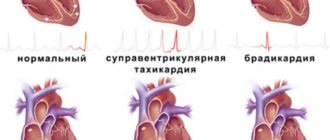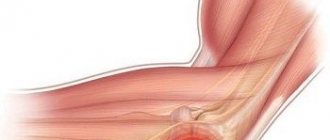Numbness is an abnormal sensation that can occur in any part of the body, but is most often felt in the arms and legs. The symptom of numbness is often accompanied by tingling, and can be quite harmless, for example, in the hands when cooling, to a sign of a serious, life-threatening condition. Numbness is a fairly common symptom. Numbness of the limbs is often accompanied by an emotional context with a feeling of detachment and decreased emotional coloring, which is usually a sign of depression. In a physical context, numbness is usually the result of damage, poor circulation, or pathological changes to certain nerves.
In addition, there may be periodic attacks of numbness and tingling due to the presence of certain health problems, such as neuroses or a migraine attack. Also, episodes of numbness can occur during attacks of fear caused by the anticipation of life-threatening events, and in such cases the numbness is caused by shallow breathing and most often affects the fingers and the mouth area.
Numbness of the hands is manifested by a feeling of loss of sensation in the hands; patients often call this condition “asleep” hands. Numbness may be accompanied by a tingling sensation from the needle. Often such numbness occurs after sleeping with your hands under your head. Numbness in the hands is usually caused by carpal tunnel syndrome, which causes compression of the median nerve. Most often, carpal tunnel syndrome is caused by compression of the nerve in the carpal tunnel. In addition, numbness in the hands can be caused by injuries, hypothermia, or systemic diseases such as diabetes. If numbness of the hands is accompanied by shortness of breath, nausea, and palpitations, then this may be a sign of acute, life-threatening conditions and requires emergency medical attention.
Numbness in the legs is a loss of feeling or sensation in the legs, resulting from disruption of communication between the peripheral nerves and the central nervous system. Typically, numbness in the legs is associated with poor circulation in the lower extremities. This numbness most often occurs when sitting cross-legged for a long period of time. In such cases, getting up and walking can relieve the numbness after a while. But numbness in the legs can also be a sign of serious damage to nerve fibers due to mechanical factors (disc herniation, radiculopathy) or nerve damage due to somatic diseases.
What is hand numbness and its causes?
Many people are familiar with the unpleasant feeling of tingling, “crawling on the skin,” as well as pain, decreased sensitivity and deterioration of mobility in the limb. All of these manifestations characterize numbness, which can occur in the arms, legs and other areas of the body. It is associated with impaired blood circulation in the tissues or compression of the nerves.
Along with numbness in the hands, the following symptoms may also occur:
- burning sensation;
- muscle spasms;
- tingling sensation;
- pain in hands, fingers;
- feeling of itching;
- tingling and numbness that gets worse when you move your fingers;
- increased sensitivity to touch;
- pain in the cervical spine.
External reasons
It’s good if your hands go numb during sleep due to unstable air temperature in the bedroom. Once this situation is corrected, the sensations will disappear. Parasthesia may occur due to the fact that the pillow or bed is chosen incorrectly or the person suffers from bad habits.
High headboard
Getting carried away by dense pillows when your head lies high, you can get a deflection in the cervical spine. This situation leads to the fact that the roots of the nerve endings passing along the spinal cord are poorly supplied with nutrition. In the areas of the spine responsible for sensitivity and mobility of the limbs, blood flow worsens.
To get rid of cramps, replace the pillow with an orthopedic version or place a cushion under the neck. Sleep items are made taking into account the anatomical features of the head and neck. Thanks to this, blood flows evenly to all parts of the spinal column.
No ads 1
Body position
Your sleeping position is important so that your hands do not lose sensitivity in the morning. When a person sleeps on his side, he lies on his hand, pinching the vessels in it. The blood begins to stagnate, leaving the hand and fingers without nutrition. The heart works slowly at night, so it is unable to deliver blood to hard-to-reach areas of the body.
Loss of sensitivity is caused by throwing your arms behind your head while lying on your back. Tight pajamas, nightgowns with long sleeves, when tight seams squeeze the blood vessels in the arms, contribute to the swelling of the limbs.
Control of body position is difficult to achieve at night. But you need to accustom yourself to the correct sleeping position so that all parts of the spine are in a straight line. Sleepwear is chosen from breathable natural materials. Women are advised to remove all jewelry from their fingers and wrists to avoid squeezing blood vessels.
The median nerve may be pinched by tight cuffs
Lifestyle
Evening consumption of coffee, strong tea, and alcoholic beverages leads to the fact that a person sleeps poorly. After all, at first the vessels are dilated, but at night they sharply narrow. Hence the occurrence of headaches and intestinal disorders. Starting to toss and turn in their sleep, people take an unnatural position, which is why their hands begin to go numb.
Hands cramp if:
- work at the computer for a long time;
- lead a passive lifestyle;
- physically load the spine during training and hard work;
- Raise their hands up during professional activities throughout the entire shift (installers, painters).
The nerves in the limbs are temporarily compressed when they draw or write for a long time.
[node:field_similarlink]
Causes of numbness in the left hand:
- Cardiac ischemia. In addition to numbness in the left arm, there is discomfort in the chest. If after taking nitroglycerin or stopping the physical activity that caused the symptoms, these manifestations disappear, then it is angina pectoris. In addition to numbness of the left arm, it is accompanied by chest pain in the heart area, panic, pale skin, nausea, shortness of breath, and cold sweat.
- Myocardial infarction. Sometimes hand numbness is the only sign of this acute cardiovascular disaster. During an attack, the patient experiences intense pain and a feeling of constriction in the chest, shortness of breath, and interruptions in the functioning of the heart. The skin becomes covered with cold sweat. Along with numbness in the hand, a person experiences pain radiating to the lower jaw, stomach, and the area between the shoulder blades.
- Atherosclerosis. Due to atherosclerotic damage to the blood vessels, decreased strength and numbness in the arm may occur. Symptoms intensify when raising the limb upward.
- Stroke. Numbness in the left hand may indicate damage to the right hemisphere of the brain. In this case, the upper and lower limbs on the left side become numb, vision and speech are impaired. Along with numbness in the hand, a stroke can cause a complete loss of sensation in the hand. Other symptoms of cerebral hemorrhage include weakness in the limbs, loss of coordination, severe headache, blurred vision, nausea and vomiting, and irritation from bright lights and sounds.
- Vegetative-vascular, or neurocirculatory dystonia. This is a complex of autonomic disorders that is associated with disorders of nervous regulation. In addition to numbness of the left hand, it may be accompanied by headaches, insomnia, pressure fluctuations, arrhythmia, and panic attacks.
- Raynaud's disease. The pathology is accompanied by paroxysmal circulatory disorders in the arteries of the extremities. Along with the numbness of the hand, its rapid freezing is felt. In the cold and with excitement, a person’s fingers may turn blue. As Raynaud's disease progresses, not only the hands become numb, but also the legs, chin, nose, and ears.
- Vitamin B12 deficiency. This connection is extremely important for the normal functioning of nerve tissue. With its deficiency, a person not only experiences numbness in the hand, but also suffers from dry mouth and pale skin.
- Osteochondrosis (usually cervical and thoracic). First, the fingers go numb, then weakness develops in the upper limb, and the grip strength of the hand decreases. Sometimes pain is felt along the outside of the shoulder and forearm.
- Overstrain of muscles in the cervical-collar region. Pianists and PC operators suffer from hand numbness due to prolonged maintenance of the same position. The problem lies in the overstrain of the muscles, which compress the nerve fibers responsible for the sensitivity of the limbs.
- Insufficient blood circulation. The upper limb becomes numb due to impaired blood flow due to damage to the walls of blood vessels, for example, in diabetes mellitus.
- Stress and psycho-emotional overload can cause hand numbness.
- Carpal tunnel syndrome. When the median nerve passing through the wrist is compressed, the left hand may become numb. This problem is familiar to people of certain professions (programmers, musicians). Nerve compression can also occur in women during pregnancy due to swelling, as well as in patients after surgery, in obese people.
Numbness in the right hand may have the following causes:
- impaired blood flow, pinched nerve due to incorrect position of the limb (for example, during sleep);
- staying in an uncomfortable position for a long time (may be due to the nature of the work, for example, carpal tunnel syndrome);
- frequent carrying of bags, suitcases and other heavy objects;
- long exposure to frost or in a cold room;
- long-term muscle tension of the upper limb.
Vascular pathologies
Small vessels in the body deliver blood to tissues and organs. If the functioning of the vessels is disrupted, then delivery is impossible. With vascular pathologies, the limbs not only go numb, but also become pale with a hint of blue. The main danger: even with a short stay in the cold, you can get frostbite on your hands.
With hypertension, the sensitivity of the limbs disappears. With anemia, the hands suffer due to a lack of oxygen in the blood, and with vegetative-vascular dystonia, numbness occurs due to weak vascular tone.
Why does hand numbness occur?
When a patient says that his upper limbs are numb, he may mean:
- a tingling feeling that causes discomfort;
- sensation of “goosebumps” under the skin;
- decreased sensitivity of the skin.
Numbness of the hands does not always indicate pathology. It may be the result of wearing too tight clothes and jewelry that compress blood vessels and nerves.
The most common causes of numbness in the hands:
- Uncomfortable body position, monotonous mechanical work, disrupting blood flow. After changing the position of the limb, the unpleasant sensations disappear.
- Carpal tunnel syndrome (usually affects the working hand due to prolonged monotonous work).
- Atherosclerosis. Accompanied by tingling and numbness of the hands, in the future a decrease in their muscle strength is likely.
- Osteochondrosis of the cervical spine (numbness, usually symmetrical, may intensify after physical activity).
- Diabetic neuropathy (usually both hands go numb).
- Intervertebral hernia in the cervical region (numbness is associated with compression of the spinal nerve roots).
- Ischemic stroke of the brain (threatens numbness and paralysis of the arm).
- Multiple sclerosis (if part of the postcentral gyrus of the brain is affected, the limbs may go numb).
- Thoracic outlet syndrome (compression of nerve trunks and blood vessels in the area of the upper chest opening).
- Brachial plexitis (numbness of the arm occurs due to inflammation of the brachial plexus).
- Damage to peripheral nerves due to alcoholism (alcoholic polyneuropathy).
- Brain tumor (the formation can compress the motor and sensory neurons responsible for the innervation of the upper extremities).
- Raynaud's disease (a disorder of the innervation of small arterioles, more common in women, manifested by numbness and pain in the extremities).
- Rheumatoid arthritis (inflammation and deformation of joints leads to compression of nerve fibers) and others.
Main services of Dr. Zavalishin’s clinic:
- consultation with a neurosurgeon
- treatment of spinal hernia
- brain surgery
- spine surgery
Diseases that cause numbness
Diseases that develop in people throughout life are a common cause of numb and tingling fingers. It is imperative to identify incipient pathology in order to prevent serious health problems. Paresthesia may be a signal of impending disease.
Carpal tunnel syndrome
After 40 years, women whose work involves tension in the tendons and joints of the hands feel tingling sensations in the wrist area at the end of the day. The skin in this place itches, goosebumps run across it. The syndrome occurs due to pinching and swelling of the nerve that passes through the carpal tunnel.
From there they control the movements of the palm, fingers, and their sensitivity. First, the syndrome affects the little fingers, then the entire palm. When the pathology spreads and is neglected, the death of nerve tissue occurs. Then sensitivity in the affected area is completely lost. As a result, a person becomes unable to use even a spoon or pen.
Pathological changes in the spine
As a result of orthopedic pathologies, damage and destruction of nerve tissue occurs. The causes of the conditions are related to:
- degenerative processes in the intervertebral discs of the cervical spine (spondylosis);
- hernias caused by a rupture of the outer shell of the disc;
- a pinched nerve in the arm at night;
- osteoporosis.
The consequence of the injury may be what the hands endure. Then the patient will complain not only of numbness, but also headaches and dizziness.
Vascular disorders
Poor condition of blood vessels and disturbances in their structure contribute to numbness in the hands at night. Insufficient blood flow to the extremities is associated with diseases:
- The congenital pathological connection between arteries and veins leads to the fact that the vessels are tangled into a ball. Arteriovenous malformation is the reason why areas of the upper extremities become numb.
- Thrombosis is the formation of blood clots that block passages in blood vessels. Pathology can occur as a result of acute inflammation of the arteries, veins, and poor lifestyle.
- The density of fat and cholesterol deposits on the walls of blood vessels leads to a narrowing of the peripheral arteries. Therefore, blood flow to the hands and fingers is limited.
- With frostbite and a decrease in air temperature in the room, parasthesia of the upper extremities is observed.
- In patients suffering from ischemic stroke, cerebrovascular accident, not only do their hands numb, but their consciousness becomes foggy, they become dizzy, and their blood pressure levels rise sharply.
If even one hand is numb for a long time, you need to contact a specialist. This could be a sign of a stroke or heart attack.
No ads 2
Neurological pathologies
Numbness of the hands at night and after sleep appears in people who are chronic alcoholics and diabetics. Patients with systemic lupus erythematosus have problems with loss of sensation in their hands as the body attacks its own tissues and cells. Limbs go numb when heavy metal poisoning occurs, injuries are sustained, and spinal tumors occur.
Carpal tunnel syndrome is one of the causes of hand numbness
The cause of malignant anemia is insufficient vitamin B12 in the body, hence the loss of sensitivity. Paresthesia that appears as a result of diseases does not go away quickly. This is worth paying attention to. Urgent help is required if sensitivity is lost for an hour and you cannot bend your fingers.
Diagnosis of the causes of hand numbness. How to identify?
At the appointment, the doctor examines and palpates the patient’s limb and asks the following questions:
- Where exactly is the numbness felt?
- When did the unpleasant tingling sensation and decreased sensitivity first appear?
- How long does numbness in a limb bother you?
- What actions and movements aggravate symptoms?
- Are there any other complaints, such as burning, itching, tingling, pain?
- How do your arms, hands, and fingers feel—cold or warm?
The main task of the doctor is to determine the causes of hand numbness. It is necessary to exclude systematic mechanical compression of blood vessels, as well as to determine household and industrial factors that could cause disturbances.
Numbness may be a harmless symptom, but it may also hide serious problems - myocardial ischemia, stroke, spinal problems, diabetes mellitus, amyotrophic lateral sclerosis, etc. In this case, the doctor issues a referral to doctors of relevant specializations (cardiologist, endocrinologist, neuropathologist, etc.).
The main emphasis in identifying the causes of numbness is on detecting signs of osteochondrosis. For this, the patient is referred for magnetic resonance imaging, radiography, computed tomography, and electromyography. The purpose of imaging studies for arm numbness is to determine the height of the intervertebral disc, detect osteophytes, and clarify the presence of protrusion or intervertebral herniation.
Spinal diseases as a cause of numbness in the hands at night
With cervical osteochondrosis, the nutrition of the intervertebral discs is impaired. Discs can become compressed and deformed. Night numbness causes pinching of the roots responsible for the sensitivity of the fingers.
Numbness can also be caused by a herniated disc. Nerve impulses are disrupted and one of the limbs loses sensation.
More than 30% of the causes of numbness are problems with the spine. To prevent this, you need to have a strong muscular frame that will not allow back diseases to poison your life.
Principles of treating hand numbness
The primary task of the doctor is to identify the root cause of this symptom. For this purpose, radiography, myelography, MRI, blood tests, etc. can be performed.
Depending on the nature of the disease that caused numbness in the hands, treatment methods are selected. First of all, the underlying disease is treated. Drug treatment is supplemented by:
- physiotherapy;
- physical therapy;
- reflexology;
- massage;
- diet therapy;
- lifestyle correction.
Preventing numbness in the hands
In order to prevent discomfort in the upper extremities, it is recommended:
- exercise regularly (discuss the type and nature of exercise with your doctor in advance);
- maintain the health of blood vessels, joints and the body as a whole (give up bad habits, eat rationally);
- dress according to the season, keep your hands warm;
- take breaks every 40 minutes if your profession involves working on a PC or performing monotonous hand movements.
Treatment with folk remedies
The following recipes help with numb hands:
- as a compress or therapeutic bath, use a mixture of 2 liters of milk, 600 g of salt and 50 g of honey, heated to 60? C;
- apply an infusion of wild rosemary with apple cider vinegar (1:3) 3 times a day;
- infusion of garlic (several cloves) in vodka (400 ml) taken orally, 3-5 drops dissolved in water;
- for 1 liter of vegetable oil - 100 g of ground black pepper, cook for 30–40 minutes, rub the cooled product into the skin of the affected limb.
How to treat numbness in fingers
- Physiotherapy aimed at activating blood circulation in problem areas.
- A diet prescribed by a doctor for complex treatment of the heart and blood vessels.
- Massage is perhaps the most effective method of treatment. With its help, pain goes away, muscle atrophy decreases, and sensitivity returns.
- Exercises that are useful for all people without exception. Gymnastics has never harmed anyone.
In case of severe pain, a complex of drug treatment or surgical intervention is prescribed.
How to get rid of numbness at home using folk remedies
Method 1. 50 g of ammonia, 10 g of camphor alcohol, 1 tablespoon of salt mixed with 1 liter of water. The resulting product is rubbed with massage movements into the disturbing areas.
Method 2. Take 2 liters of hot and 2 liters of cold water. Alternately lower your hand for 30 seconds. 5 times. Then apply turpentine ointment to problem areas and wrap with a warm cloth.
Method 3. Prepare a warming mixture with vodka from 2 pickled cucumbers and 3 red peppers. You will need half a liter of vodka. The tincture should be allowed to stand for 7 days in a dark place. Afterwards you can rub it into your brushes.
Method 4. Make honey compresses. Apply 3 tablespoons of honey to your hands, wrap with cotton cloth, and put on gloves. You need to repeat this action in the morning and evening.
Method 5: Rub in red pepper mixture. Take 100 g of pepper and 1 liter of vegetable oil, mix, heat over low heat for half an hour, rub in. Effectively use three times a day.
Method 6. Drink lingonberry broth. Boil 2 teaspoons of leaves in 1 glass of water, leave for half an hour, strain. We drink a sip three times a day.
Treatment of hand numbness in specialized hospitals
Department of Neurosurgery, City Clinical Hospital named after. A.K. Yeramishantseva sees patients with complaints of numbness in their hands. Here, progressive methods of conservative and surgical treatment of diseases manifested by such symptoms are used. Advanced technical equipment and extensive professional experience of the medical staff guarantee good treatment results. Telephone.
Neurosurgeon Evgeniy Evgenievich Zavalishin treats diseases that cause numbness in the hands. Sign up for a consultation by calling 8 (499) 940-04-30.









